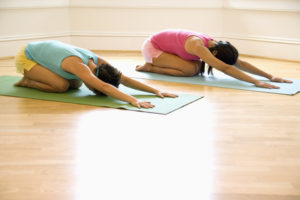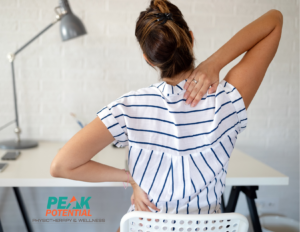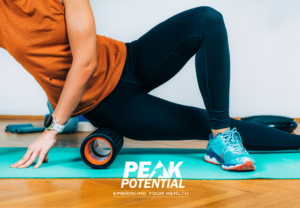
Your spine, or back bone, is really amazing!
It is as the same time strong and flexible. It stabilizes
your entire body, yet is able to to bend, move, and rotate.
We we lose this stability or mobility, back problems
occur. These are usually related to the discs or muscles
surrounding the spine.
What about the bone itself? Outside of a trauma, like a
car accident, the most common injury to your vertebrae
(back bone) is a compression fracture.
Vertebral compression fractures are a collapse of the bone,
most commonly due to osteoprosois. Typically, the force
required to break the bones of the spine would need to be
quite substantial. However, when bone becomes fragile a
simple task such as picking an object off the floor, or even
sneezing can cause a fracture.
The result is pain, limited movement, loss of independence,
as well as shortened height and forward curve of the spine.
It is important to take steps to strengthen bone to prevent
osteoporosis. However, there are also ways to specifically
help keep your back and bones supple decreasing your risk
of fracture.
While you are at it, you will decrease back pain, stiffness,
and chance of other back injuries. Just a few simple
exercises will help keep your vertebrae aligned and the
muscles of your back strong and supple.
Stretching your spine has significant benefits:
- Reduce back pain
- Reduce muscle tension
- Improve circulation
- Improve posture
- Decrease inflammation
- Decrease stress
Stretching creates space between the vertebrae and aligns
the body. Strong, aligned vertebrae are better able to
absorb shock and less likely to fracture. In addition, tight,
contracted muscles tend to pull vertebrae out of alignment.
This contribute to back pain and sets the stage for a break.
We need to focus on positions that allow the muscles and
connecting tissues in the pelvis, back, and ribs to relax. By
lengthening the muscles in these areas we will improve
spinal flexibility and mobility. Holding the stretches as you
would a yoga pose also tones your core muscles, inner thigh,
and buttocks to improve your overall posture and well being.
5 Best Spine Stretches:
1. Lunge Stretch
This stretch offsets the stiffness that occurs with long bouts
of sitting. Get on the floor in a half kneeling position. Keep
your back straight while you push your knee into the
ground and let your hip sink down into the stretch.
2. Legs Up the Wall
Lie on your back close to a wall. Walk your feet up the wall
and scoot forward until your bottom is against the wall with
legs straight up. Hold this position with feet facing the
ceiling. You can also spread legs slowly outward into a V.
3. Child’s pose
Kneel down and sit down on your heels. Lean forward with
your hands on the floor in front of you walk your hands out
forward until you feel a stretch along your upper back,
letting your head drop down naturally to the floor.
4. Full back stretch
Hold onto the back of a chair with your feet shoulder width
apart. Keeping your back straight, move your body forward
at the hips until you feel a stretch in your shoulders and
back. You want your back to end up parallel with the ground.
5. Upper spine and shoulder stress
This corrects and prevents a hunched over posture. Clasp
your hands behind your back, straighten your arms, and
slowly raise them up toward the ceiling. You’ll feel a stretch
across your chest and the front of your shoulders.
For those already diagnosed with low bone mass (called
osteopenia) or osteoporosis, care must be taken not to
stretch into compromising positions. Certain movements,
like those that require twisting of the spine or bending
forward from the waist (like sit-ups or toe touches), can
increase risk for fracture and should be avoided.
If you have low bone density or back pain in general, an
individually designed home exercise program is your safest
option. When designed by a physical therapist, your efforts
will yield the most beneficial results.
For everyone, it’s important to understand that little and
often is more beneficial than doing a lot occasionally. Progress
with this type of stretching program can be slow. You may not
feel or see any difference for months – but it will be working.
Once you try these, head over to our Facebook page and let us
know which one is your favorite. Don’t forget to “Like” our page
and share this information with a friend while you are there!



